First aid training for individuals injured in traffic accidents
500,000 ₫
Note: The above price is calculated per person. Prices may vary depending on the number of participants in the course and market fluctuations. For more accurate pricing, please refer to the price list or contact our consulting staff directly.
Table of Contents
Toggle1. Identifying Traffic Accident Victims
a. Cases of traffic accidents
Traffic accidents are one of the leading causes of injury and death worldwide. Potential cases include:
- Pedestrians being hit by vehicles: This often occurs when pedestrians cross streets or walk along the roadside without proper caution.
- Cyclists being hit by vehicles: Cyclists may be involved in accidents when running red lights, not riding in designated lanes, or failing to wear helmets.
- Motorcyclists in traffic accidents: Motorcyclists may experience accidents when not wearing helmets, running red lights, speeding, or riding outside proper lanes.
- Car occupants involved in traffic accidents: Passengers may be injured when cars collide with other vehicles or obstacles.
- Drivers in traffic accidents: Drivers may be involved when driving improperly, violating traffic laws, or not wearing seat belts.
- Train or tram passengers in accidents: Passengers may be injured in collisions or derailments.

b. Signs someone is about to be involved in a traffic accident
Signs that a traffic accident may occur include:
- Pedestrians or cyclists suddenly appearing on the road without warning.
- Vehicles moving at high speeds or ignoring traffic rules.
- Drivers losing control or drifting into other lanes.
- Pedestrians or cyclists not paying attention to surroundings or violating traffic rules, such as crossing in undesignated areas.
- Distraction, extreme fatigue, or influence of intoxicating substances.
- Poor visibility due to darkness, rain, snow, fog, or other weather conditions.
- Improper or malfunctioning lights on vehicles, increasing accident risk.

c. Assessing the condition of traffic accident victims
Traffic accident victims can have a wide range of injuries, which may be severe. Common conditions include:
- Head injuries: Victims may experience skull fractures, brain trauma, neck injuries, or cranial injuries. Signs include bleeding, headache, memory loss, dizziness, and nausea.
- Spinal injuries: Victims may suffer spinal fractures, nerve damage, or paralysis. Signs include back and neck pain and weakened muscles.
- Musculoskeletal injuries: Victims may have broken bones, bruises, or abrasions. Signs include pain and swelling at the injury site.
- Abdominal injuries: Victims may have internal organ injuries, such as liver, kidney, intestines, or bladder trauma. Signs include abdominal pain, vomiting, and difficulty breathing.
- Blood loss and shock: Victims may experience severe bleeding, leading to shock. Signs include pale skin, fatigue, and dizziness.

d. Golden time for traffic accident cases
The golden time is the critical period for rescuing a traffic accident victim. It typically lasts from a few minutes to one hour after the accident. During this period, prompt first aid and rapid transportation to a hospital are essential to minimize injuries and save lives.
Quick and accurate assessment of the victim’s condition and timely first aid during the golden time help reduce the risk of severe injury and increase the chances of survival.
2. Overview of First Aid Training for Traffic Accident Victims
a. What is a first aid training course?
A first aid training course is designed to teach learners basic and advanced first aid skills. It includes lessons and practical exercises for handling emergencies such as cardiac arrest, respiratory failure, poisoning, injuries, and other urgent situations.
The course equips learners with the skills needed to respond effectively to emergencies, minimize harm to themselves and others, increase survival chances, and ensure timely medical care.
REGISTER FOR BASIC FIRST AID TRAINING
b. Training duration
Initial first aid training:
- For employees: 4 hours.
- For first aid and emergency responders: 16 hours (2 days).
Periodic first aid training:
- For employees: 2 hours.
- For first aid and emergency responders: 8 hours (1 day).
c. Course content
- Basic principles of first aid and on-site emergency care
- Wound bandaging (principles, tools, techniques)
- Temporary bleeding control techniques (principles and methods)
- Temporary fracture stabilization techniques (principles and tools)
- Cardiopulmonary resuscitation (recognizing cardiac arrest, airway clearance, breathing support, CPR guidance)
- Burn management (assessing cause and severity, on-site first aid)
- Safe victim transportation with and without stretchers for initial care
- Specific emergency care scenarios:
- Electric shock
- Drowning
- Chemical accidents
- General guidance on first aid kit use
- Practical exercises for all content areas
d. First aid training certificate
Upon completing the course, learners receive a certificate confirming completion of the first aid training program under the Group 2 training framework as specified in Appendix IV, Decree 44/2016/ND-CP. The certificate is valid for 1 year.


3. Essential Tools for a First Aid Kit in Case of Traffic Accidents
A first aid kit is an important part of preparation for traffic accident situations. The essential tools in a first aid kit include:
- Bandages: Used to dress wounds.
- Cotton: Used to clean wounds or provide cushioning for injuries.
- Disinfectant solution bottle: Used to clean wounds and kill bacteria.
- Medical gloves: Ensure hygiene and prevent infection.
- Oxygen tank: Provide oxygen to the victim if necessary.
- Scissors: Used to cut clothes or other materials to access wounds.
- Ice pack: Used to reduce pain and swelling at injury sites.
- Wet gauze: Used to clean wounds.
- Adhesive patches: Protect wounds and keep bandages in place.
- Medications such as Paracetamol, Ibuprofen, or Aspirin to relieve pain, reduce fever, and decrease inflammation.
Additionally, other useful tools include sunshades, raincoats, power banks, tape and adhesive, mobile phones, and pocket computers to call emergency services or contact family members.
REGISTER FOR BASIC FIRST AID TRAINING
4. First Aid Procedure for Traffic Accident Victims
The first aid procedure for traffic accident victims depends on the victim’s condition. The basic steps are as follows:
- Ensure safety: The first and most important step is to ensure safety for yourself and others. Place warning signs such as cones or signals, and try to control traffic.
- Assess the victim’s condition: Check the victim to determine their condition. Talk to them calmly to keep them relaxed. If the victim is lying face down, tilt their head to the side to prevent choking.
- Call emergency services: Call 115 or contact the local traffic rescue team for assistance.
- Provide first aid: Begin first aid procedures. For head injuries, stabilize the head and place a pillow underneath to minimize impact. For open wounds, use appropriate materials to dress and stop bleeding. If the victim is not breathing, perform rescue breathing and CPR if necessary.
- Monitor: Continuously monitor the victim’s condition and continue first aid until the traffic rescue team arrives and takes over.
5. Benefits of First Aid Training
First aid training provides many important benefits for individuals and the community:
- Saving lives in dangerous situations: First aid skills enable trainees to save people whose lives are at risk, such as cardiac arrest, respiratory arrest, poisoning, injuries, and other emergencies.
- Helping others learn first aid: Trained individuals can share knowledge and experience with others, enabling the community to protect itself and reduce fatalities in emergency situations.
- Reducing waiting time for rescue: When trained first aiders handle emergencies on-site, waiting time for rescue teams is minimized.
- Enhancing response and reducing stress in emergencies: First aid training equips learners to respond accurately and quickly, lowering stress and anxiety while awaiting help.
- Increasing survival rates and reducing fatalities: Timely and proper first aid improves survival chances and reduces complications or deaths in emergencies.

6. First Aid Training Capacity of An Toan Nam Viet
An Toan Nam Viet is a reputable and high-quality first aid training center in Vietnam. Training sessions are conducted continuously at workshops, factories, and construction sites nationwide (all 63 provinces of Vietnam).
REGISTER FOR BASIC FIRST AID TRAINING
Training Certification
- An Toan Nam Viet has been inspected and certified by the Department of Safety under the Ministry of Labor – Invalids and Social Affairs for occupational safety and hygiene training. Within the Group 2 training program, the first aid skills module is included, further strengthening our capacity in first aid training.

Training Materials and Lectures
- Before being used in first aid courses, training materials are reviewed to ensure accuracy and practical effectiveness.
- Instructor methods are standardized according to An Toan Nam Viet standards, developed by experts in first aid training to maximize knowledge retention for learners.
Facilities
- Controlling factors in the training room enhances teaching efficiency and knowledge absorption.
- Our training facilities provide spacious classrooms meeting standards for space, lighting, and training equipment.
7. Nationwide First Aid Training Centers
An Toan Nam Viet is one of the most reputable and professional organizations for first aid training in Vietnam. With experienced instructors, modern equipment, and high-quality programs, the center has become an ideal destination for those interested in protecting lives and health.
By attending courses at An Toan Nam Viet, you will learn basic and advanced first aid skills, from CPR for cardiac arrest, respiratory arrest, poisoning, injuries, to handling other emergency situations. The program is flexible and suitable for all learners, including adults, children, medical staff, rescue personnel, and the general public.
An Toan Nam Viet’s first aid training not only teaches essential life-saving skills but also fosters awareness to protect your own life and health as well as those around you. Training by experienced and highly qualified instructors ensures confidence and readiness for any emergency situation.
Register for first aid courses at An Toan Nam Viet to protect your life, health, and the community.
1 review for First aid training for individuals injured in traffic accidents
No comments yet

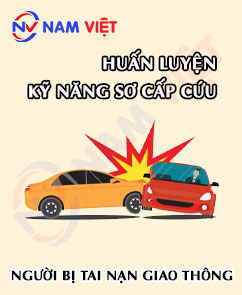
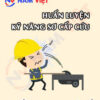
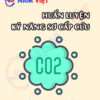


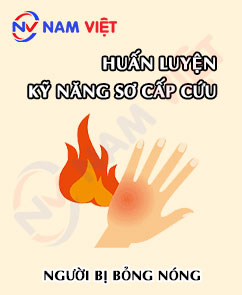



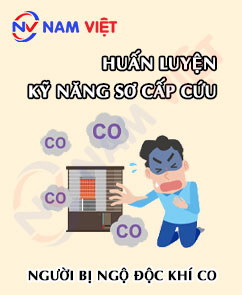
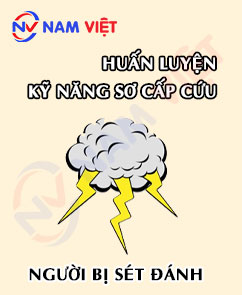
maituyet.cuong12
Good first aid training center! Satisfied